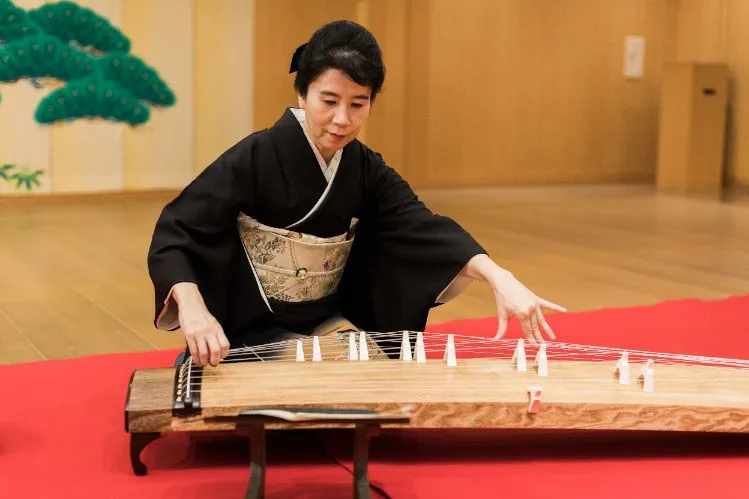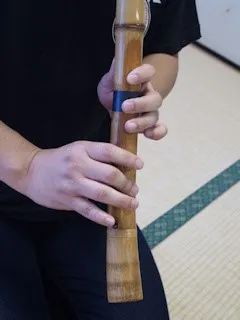Introduction of Japanese Traditional Instruments
Koto is a string musical instrument consisting of 13 strings. The strings are plucked with nail-shaped picks worn on three fingers of the performer's right hand. It is said to have originated in the forth century BCE in China, and transmitted to Japan in the seventh century AD. It is made of paulownia wood.
Koto's musical scales is created by placing triangle bridges called kotoji between the strings and the wooden body. Rhythm is basically pentatonic. While the player uses his/her right hand to pluck the strings, he/she creates vibrato and changes the tune with the left hand. This is a technique called oshite. There are two main schools of koto players, the Ikuta School and the Yamada School. There are, however, many more variant styles. The Ikuta School uses square-edged picks and the Yamada School uses round-edged picks.

Shamisen is a three-string instrument with a long neck. It is performed by strumming on the strings strained from the neck through the body with a plectrum shaped like a gingko leaf.
It is said to have originated in the fifteenth to sixteenth century, and its history is relatively short compared to other Japanese musical instruments.
Shamisen's strings are made of silk, and the plectrum is made of tortoise shell or ivory. Quince is used for the body, and for the neck ruby wood. A hide of cat or dog makes the drum skin on the front part of the body.

Shakuhachi is one of the traditional woodwind instruments in Japan. It is made of bamboo. The name "shakuhachi" derives from its length, "isshaku hassun" (one shaku and eight sun) that measures to around 54.5cm. In general, it is made of a stalk of bamboo with seven joints. The player makes sound by blasting his breath into the mouth piece at the top. There are four finger holes on the front side and one on the back. It is performed in vertical orientation.
